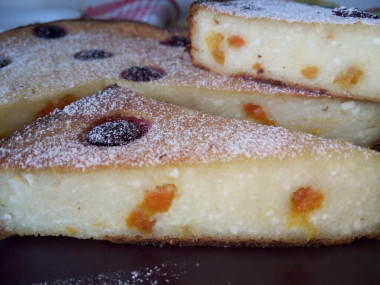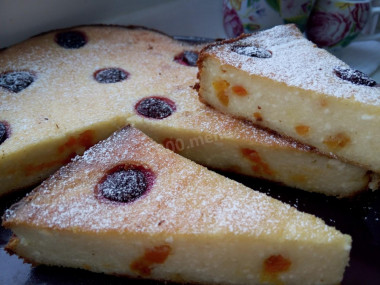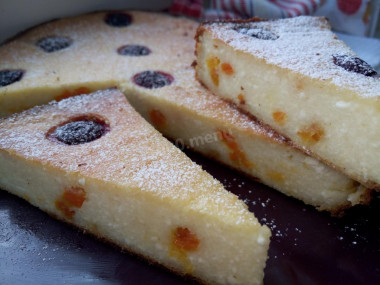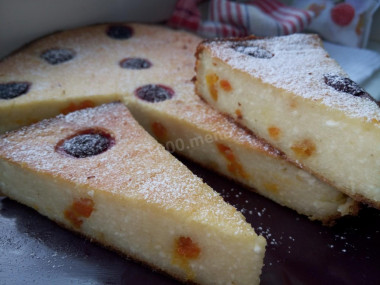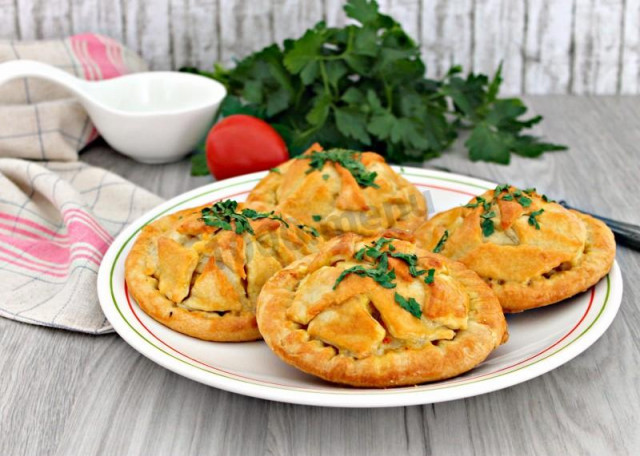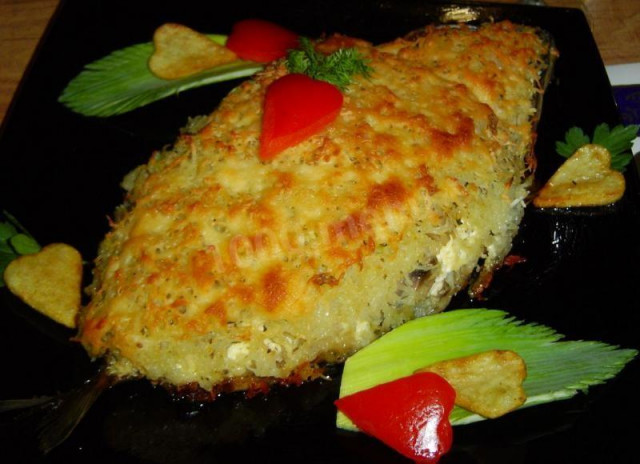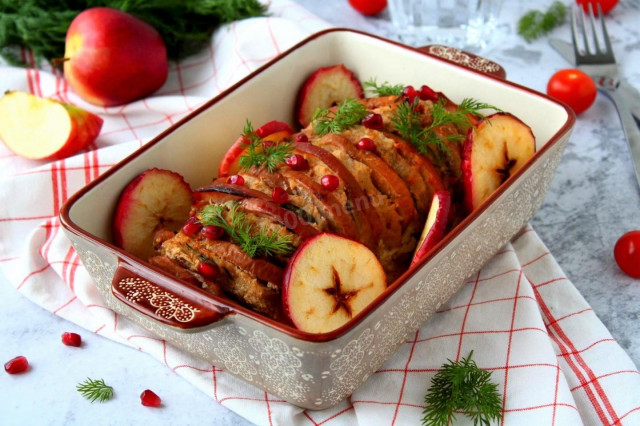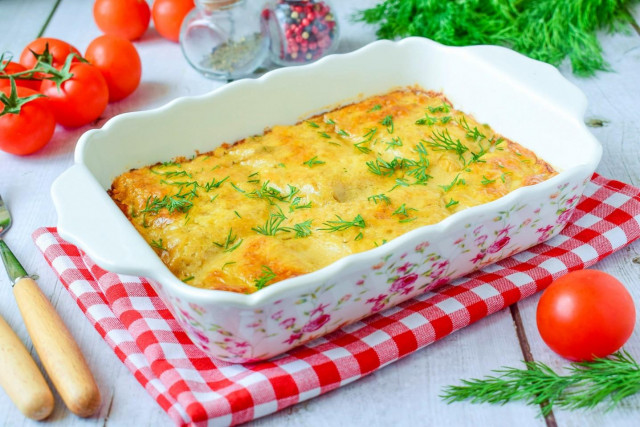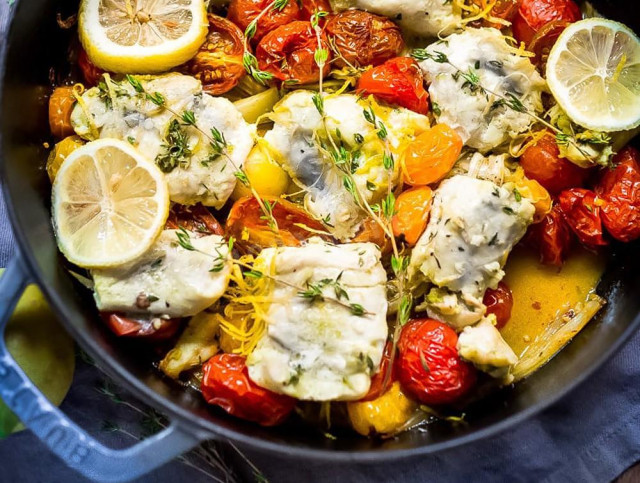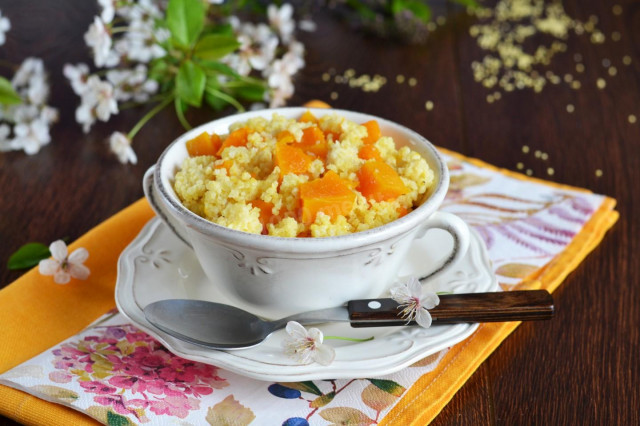Composition / ingredients
Step-by-step cooking
Step 1:
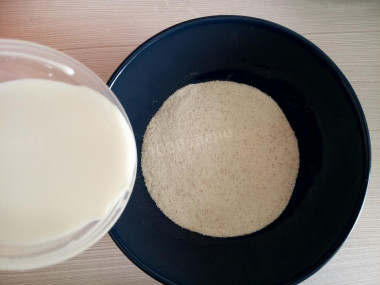
How to make a manno curd casserole in the oven? First, pour the semolina with milk. Be sure to stir everything and forget about this mass for half an hour.
Step 2:
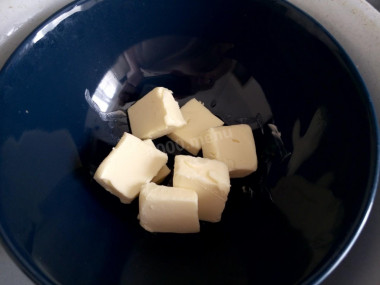
While the semolina is swelling, we need to soften the butter. It is better to do this naturally, i.e. in the kitchen, on the table, putting it on a saucer in advance.
Step 3:
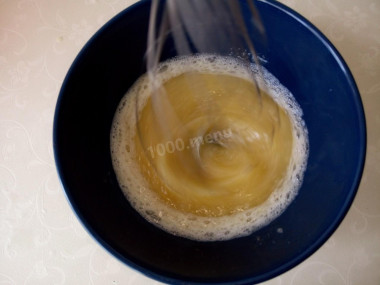
In order not to waste time, let's continue - break the eggs into a plate and, adding sugar, whisk. But don't overdo it – we don't need foam at all.
Step 4:
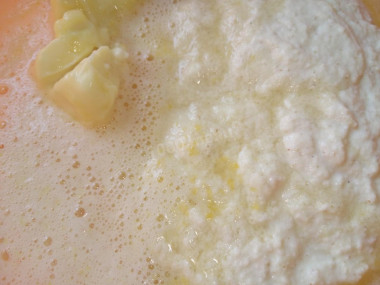
Next, pass the cottage cheese through a sieve, meat grinder or blender, and then send the butter, egg-sugar mixture, semolina with milk, as well as salt and vanilla here.
Step 5:
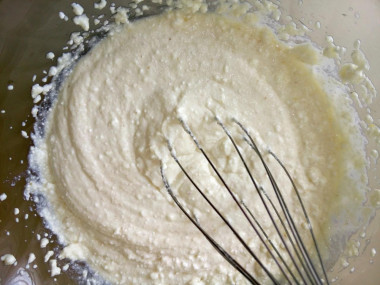
You can mix this mass with a fork, and with a whisk, and in any other way that is more appropriate for you. It is important that the mass acquires a pasty state.
Step 6:
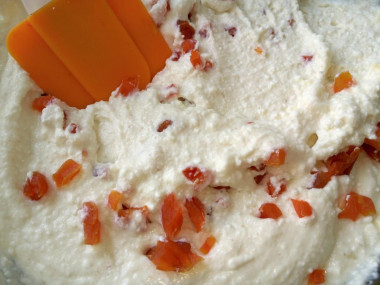
I love dried apricots in a casserole, so I chopped it finely. It didn't have to be soaked, because it was fresh and soft. If you do not want dried apricots, put the raisins, soaking it in hot water beforehand. Add dried apricots (or raisins) and mix the mass again.
Step 7:
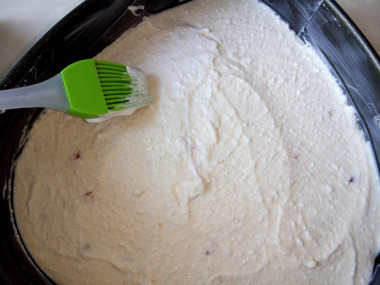
It remains for us to turn on the oven and set it at 180 degrees. While it is warming up, lubricate the mold (bottom and walls) with oil. You can sprinkle with breadcrumbs or semolina, and put the dough in a baking dish prepared for baking. Remember that the thickness of the casserole should be 3-4 cm. Smooth its surface with a spatula and smear with sour cream. If you want, lay out the top with berries.
Step 8:
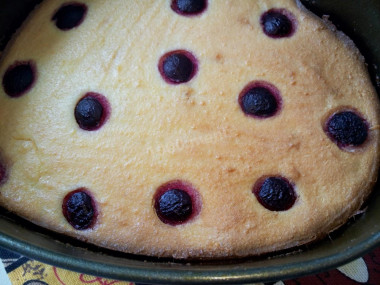
It remains for us to send the form to the heated oven. Bake for 35-40-50 minutes – depends on the oven. I took the casserole out of the oven when its top was gilded. But take it out of the form after 20 minutes.
And more tips
To make the casserole tastier, it's better to take homemade cottage cheese or products from a proven brand.
If you have cottage cheese from the freezer, it does not matter – as long as it is fresh before laying. Defrost, remove excess moisture if it appears.
Add to the casserole only what your family and you like. It can be candied fruits, zest, raisins, dried apricots, etc
.
Do not put flour in a casserole that is prepared with semolina.
You can put ready–made semolina porridge - they say that this way the casserole becomes even more tender.
If you want a more lush casserole, add a little baking powder to the dough.
By the way, if you divide the finished casserole into parts, you can freeze it, and then only warm it up in a convenient way before use.
Important! In order for the curd dough or filling to be successful, it is important to carefully consider the choice of cottage cheese. A low-quality product can spoil baking, as it directly affects the consistency, taste and final result. How to choose the right cottage cheese for dough or filling read in this article .
How to choose semolina, cook the perfect porridge from it and much more, read the article about semolina and semolina .
Keep in mind that everyone's ovens are different. The temperature and cooking time may differ from those specified in the recipe. To make any baked dish successful, use useful information about the features of ovens !
Caloric content of the products possible in the composition of the dish
- Whole cow's milk - 68 kcal/100g
- Milk 3.5% fat content - 64 kcal/100g
- Milk 3.2% fat content - 60 kcal/100g
- Milk 1.5% fat content - 47 kcal/100g
- Concentrated milk 7.5% fat content - 140 kcal/100g
- Milk 2.5% fat content - 54 kcal/100g
- Chicken egg - 157 kcal/100g
- Egg white - 45 kcal/100g
- Egg powder - 542 kcal/100g
- Egg yolk - 352 kcal/100g
- Ostrich egg - 118 kcal/100g
- Semolina - 340 kcal/100g
- Cottage cheese of 40% fat content - 466 kcal/100g
- Cottage cheese of 20% fat content - 233 kcal/100g
- Cottage cheese of 18% fat content - 226 kcal/100g
- Cottage cheese of 10% fat content - 156 kcal/100g
- Low-fat cottage cheese - 75 kcal/100g
- Cottage cheese with sour cream - 260 kcal/100g
- Fruit cottage cheese - 147 kcal/100g
- Soft dietary cottage cheese - 170 kcal/100g
- Vitalinia cottage cheese - 64 kcal/100g
- Cottage cheese "morning" ( "danone") without sugar - 91 kcal/100g
- Cottage cheese - 156 kcal/100g
- Granulated sugar - 398 kcal/100g
- Sugar - 398 kcal/100g
- Butter 82% - 734 kcal/100g
- Amateur unsalted butter - 709 kcal/100g
- Unsalted peasant butter - 661 kcal/100g
- Peasant salted butter - 652 kcal/100g
- Melted butter - 869 kcal/100g
- Salt - 0 kcal/100g
- Vanillin - 288 kcal/100g


